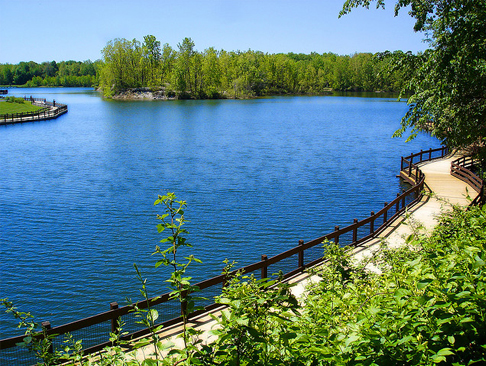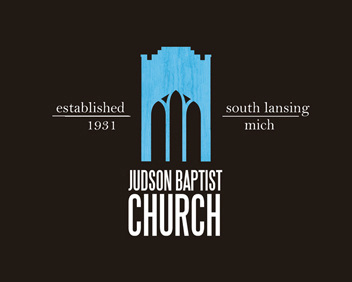 Ever since God planted mankind in the Garden of Eden, we have been tied to the places we live. The first two cities described in the Bible were built out of rebellion to God, but as Christ’s people, we look for the redemption of our cities, culminating with the unveiling of the New Jerusalem. For more than ninety years, we have been ministering to the people of Lansing, and are excited about what God is doing here and the future of our city in general. Ever since God planted mankind in the Garden of Eden, we have been tied to the places we live. The first two cities described in the Bible were built out of rebellion to God, but as Christ’s people, we look for the redemption of our cities, culminating with the unveiling of the New Jerusalem. For more than ninety years, we have been ministering to the people of Lansing, and are excited about what God is doing here and the future of our city in general.
In 1847 the fate of mid-Michigan was forever changed when the state legislature shocked residents by voting to remove the capital from Detroit, Michigan’s largest city, and relocate it to tiny Lansing Township. Debates about the capital’s location had waged for years, with many residents and legislators arguing that Detroit’s position on the Canadian border rendered it an inappropriate choice for the seat of government. After dozens of votes, during which many different Michigan cities and townships were proposed, Lansing Township was declared the new capital. Yet mid-Michigan was so underdeveloped that Lansing Township was then only home to eight registered voters.
Our state’s government met in Michigan, Michigan, as the settlement was then known, beginning in January of 1848. They held sessions in the new wooden capitol building, constructed the previous year. Located on the block bordered by Capitol, Washington, Allegan, and Lenawee Streets, the small, hastily built structure was considered to be a temporary home for the legislature from the outset. In this building the Michigan Legislature voted to change the community’s name to Lansing.
As legislative sessions were then part-time, lasting only a few months, the capitol also served as a sort of town hall, where local churches worshiped, community organizations met, and major holidays were celebrated. In 1861, when the Civil War broke out, Lansing citizens gathered in the wooden capitol to answer President Lincoln’s call for troops. On April 13, 1861, Charles T. Foster became the first man from Lansing to sign the volunteer rolls. Ultimately, Foster served with many other Lansing men in the Third Michigan Infantry. He died at the Battle of Fair Oaks on May 29, 1862.
Over the years the legislature chose to locate many statewide educational facilities in the Lansing area for easy observation. In 1855 the legislature established the Agricultural College of the State of Michigan, to be located just east of Lansing. The college officially opened on May 13, 1857, with a staff of five faculty members to instruct sixty-three students. Initially funded through the sale of state lands in Michigan, this land-grant school became the model for the Morrill Act, signed by President Lincoln in 1862. Under this act the federal government could grant federally controlled land to states to be developed or sold for the endowment of land-grant colleges.
Several other educational institutions of note opened in Lansing in the mid to late nineteenth century, including the Michigan Female College (a private institution), the Michigan School for the Blind, and the Michigan State Reform School. Thousands of young people came to Lansing to attend these schools, and hundreds of local residents were employed by them.
 Lansing officially incorporated as a city in 1859. Throughout the ensuing decades the city grew slowly, but steadily. The construction of better roads and, eventually, the coming of the railroad, positioned Lansing to play a larger role in Michigan’s economy. While many area families continued to farm, Lansing began to develop as a center of manufacturing where farm implements, wagons, wheels, wheelbarrows, and stoves were made. Lansing officially incorporated as a city in 1859. Throughout the ensuing decades the city grew slowly, but steadily. The construction of better roads and, eventually, the coming of the railroad, positioned Lansing to play a larger role in Michigan’s economy. While many area families continued to farm, Lansing began to develop as a center of manufacturing where farm implements, wagons, wheels, wheelbarrows, and stoves were made.
In 1879 Lansing residents joined citizens from across the state in celebrating the opening of a grand new capitol building. Designed by architect Elijah E. Myers, the new Michigan State Capitol, located in the very heart of the city, became an instant icon. It is one of the first statehouses in the nation to feature a lofty cast iron dome, a symbol that would come to represent American democracy.
In 1897 Lansing’s most famous resident, auto pioneer Ransom E. Olds, founded the Olds Motor Vehicle Company in Lansing. Within a few years Lansing became the home to two major automobile companies, both of which were founded by and named for Olds: the Olds Motor Works, which became the Oldsmobile division of General Motors, and the REO Motor Company. Thousands of people from across the country and the world poured into Lansing to work in the auto factories. And teachers, clerks, restaurateurs, home builders, and clergy came as well, eager to be a part of our growing city. From 1900-1930 Lansing’s population grew from 16,485 to 78,397 residents.
The Great Depression of the 1930s brought the city’s growth to a standstill. Lansing’s local economy, now heavily dependent on the auto industry, suffered greatly, and unemployment rose. America’s entry into World War II helped reverse this trend as Lansing’s factories, now increasingly staffed by women, quickly retooled to produce bombs, military trucks, and tanks.
In 1959 Lansing celebrated its centennial by opening the present city hall building on the corner of Michigan and Capitol Avenues. The same decade saw the establishment of Lansing Community College, and the opening of Frandor Mall, only the second shopping center in the country.
 Throughout the 1960s, 1970s, and 1980s Lansing faced significant changes as urban renewal, the expansion of the highway system, and the growth of suburbia drew people away from traditional cities. A decline in manufacturing added to local concerns, raising questions about the city’s future.
Throughout the 1960s, 1970s, and 1980s Lansing faced significant changes as urban renewal, the expansion of the highway system, and the growth of suburbia drew people away from traditional cities. A decline in manufacturing added to local concerns, raising questions about the city’s future.
Beginning in the 1990s and continuing today, Lansing is rebounding and growing once more. North Lansing, now restyled as Old Town, has developed into a vibrant, artsy neighborhood. REO Town, formerly home to the REO Company, is poised to make a comeback. The Lansing Lugnuts, a minor league baseball town, sparked the rebirth of the Michigan Avenue corridor. From 1989-1992 the Michigan State Capitol underwent a $58 million restoration, and was named a National Historic Landmark, the highest honor bestowed upon historic buildings. And the future of automobile manufacturing was assured as two new General Motors plants opened in the Lansing area.
Today Michigan’s historic capital city, now over 150 years old, stands ready for the future.
Lansing websites to explore:
History of Lansing by Judson Baptist’s Valerie Marvin, president of the Lansing Historical Society.
|







 Ever since God planted mankind in the Garden of Eden, we have been tied to the places we live. The first two cities described in the Bible were built out of rebellion to God, but as Christ’s people, we look for the redemption of our cities, culminating with the unveiling of the New Jerusalem. For more than ninety years, we have been ministering to the people of Lansing, and are excited about what God is doing here and the future of our city in general.
Ever since God planted mankind in the Garden of Eden, we have been tied to the places we live. The first two cities described in the Bible were built out of rebellion to God, but as Christ’s people, we look for the redemption of our cities, culminating with the unveiling of the New Jerusalem. For more than ninety years, we have been ministering to the people of Lansing, and are excited about what God is doing here and the future of our city in general.
 Lansing officially incorporated as a city in 1859. Throughout the ensuing decades the city grew slowly, but steadily. The construction of better roads and, eventually, the coming of the railroad, positioned Lansing to play a larger role in Michigan’s economy. While many area families continued to farm, Lansing began to develop as a center of manufacturing where farm implements, wagons, wheels, wheelbarrows, and stoves were made.
Lansing officially incorporated as a city in 1859. Throughout the ensuing decades the city grew slowly, but steadily. The construction of better roads and, eventually, the coming of the railroad, positioned Lansing to play a larger role in Michigan’s economy. While many area families continued to farm, Lansing began to develop as a center of manufacturing where farm implements, wagons, wheels, wheelbarrows, and stoves were made.
 Throughout the 1960s, 1970s, and 1980s Lansing faced significant changes as urban renewal, the expansion of the highway system, and the growth of suburbia drew people away from traditional cities. A decline in manufacturing added to local concerns, raising questions about the city’s future.
Throughout the 1960s, 1970s, and 1980s Lansing faced significant changes as urban renewal, the expansion of the highway system, and the growth of suburbia drew people away from traditional cities. A decline in manufacturing added to local concerns, raising questions about the city’s future.